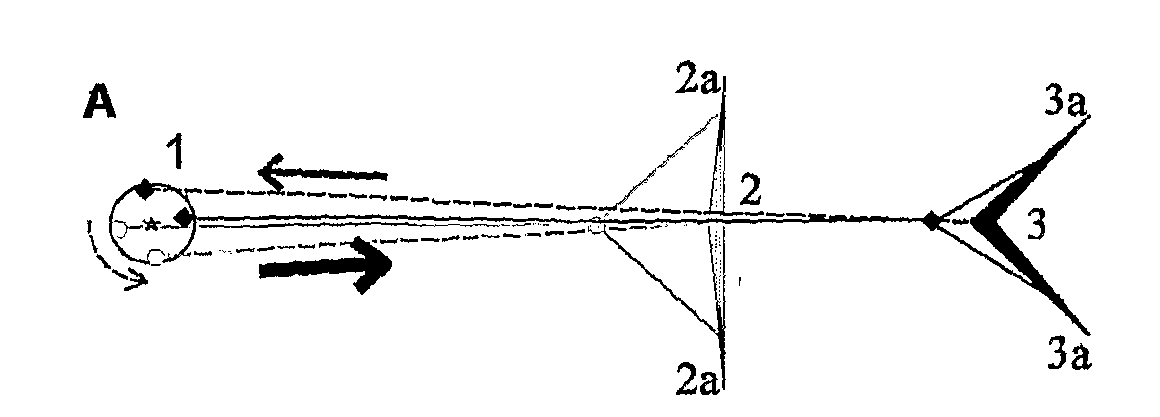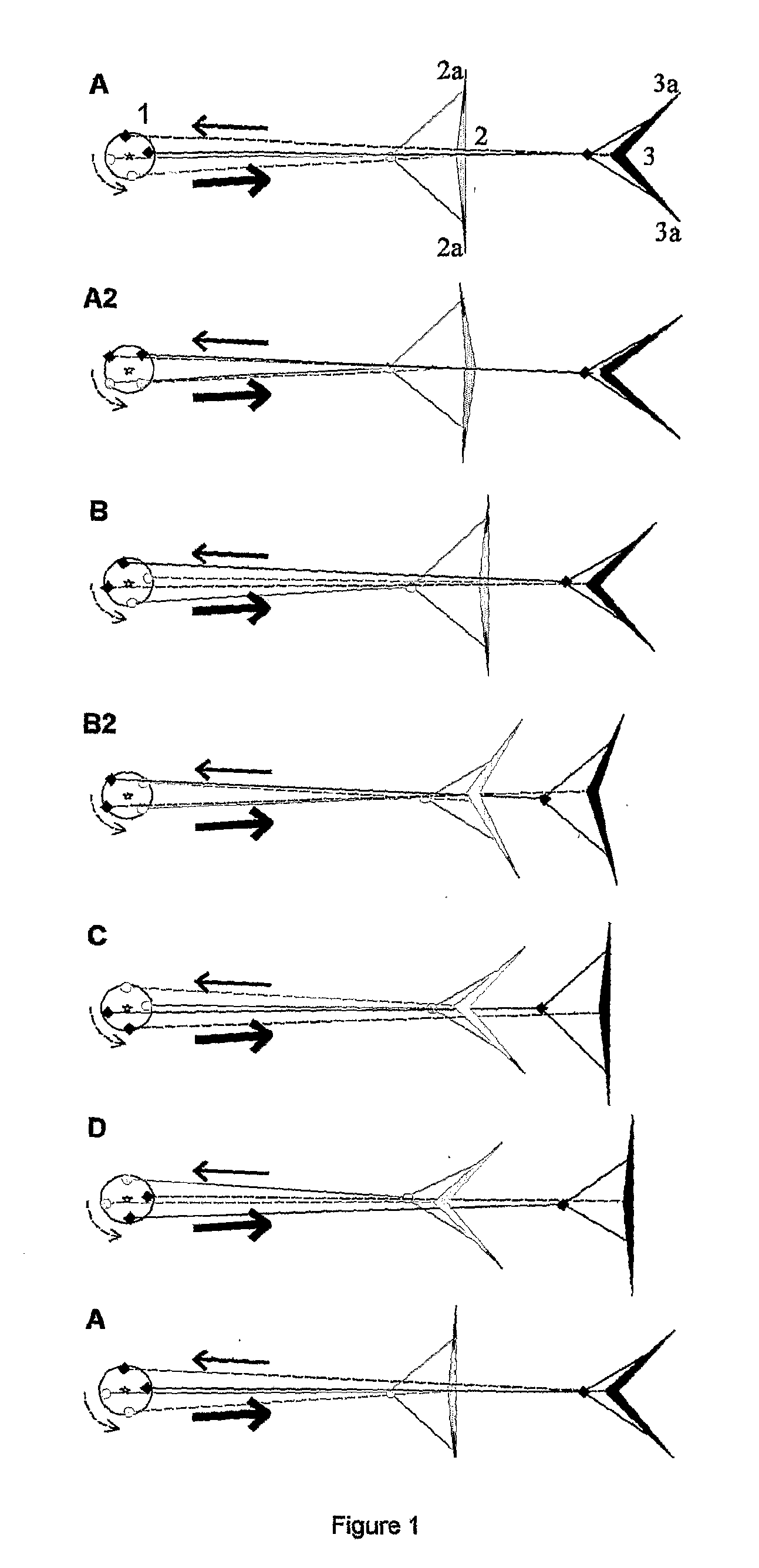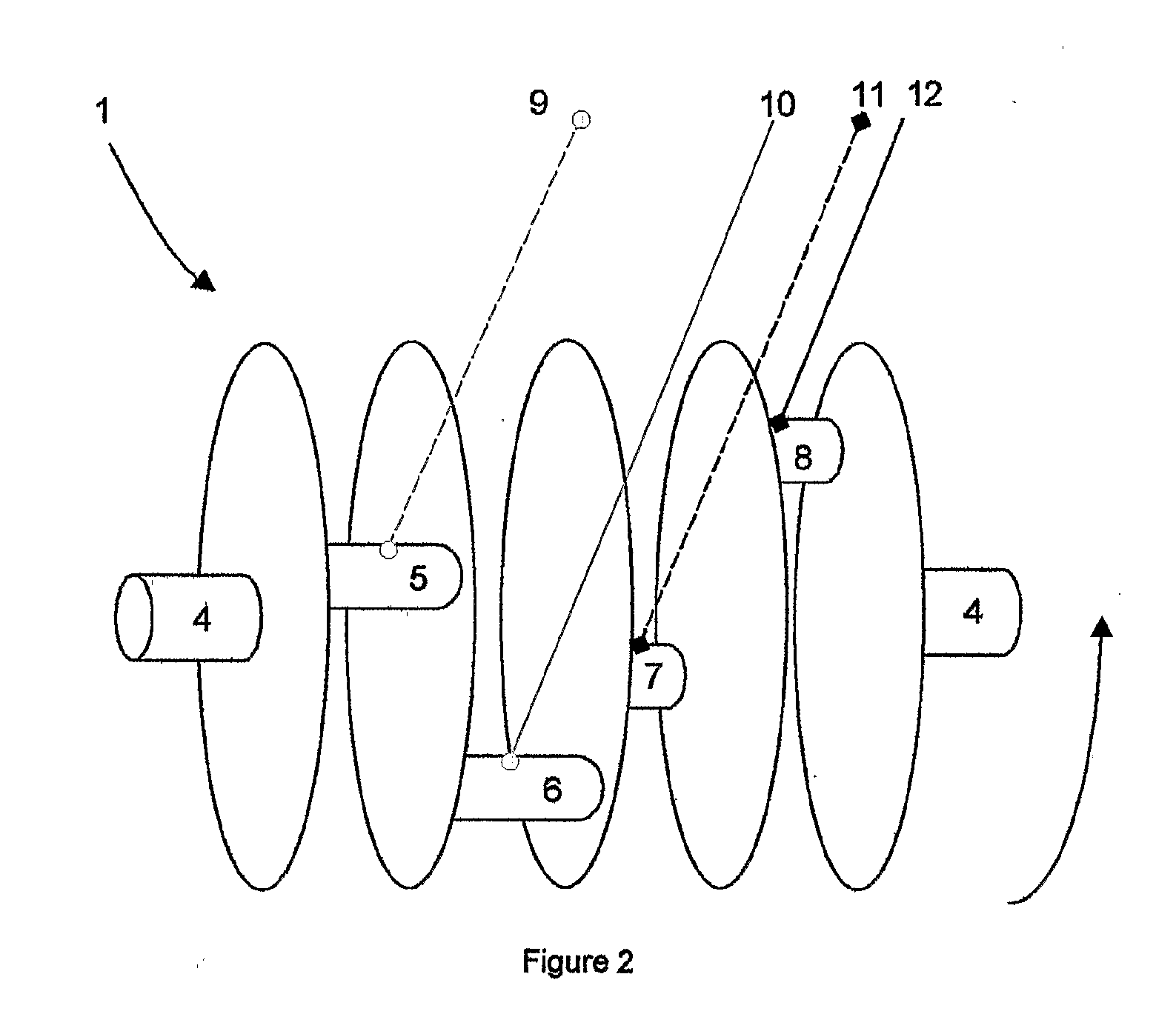Kite Power Generator
a power generator and kite technology, applied in the direction of electric generator control, machines/engines, mechanical equipment, etc., can solve the problems of economic and engineering limitations, unsightly appearance, and expensive construction, and achieve the effects of convenient disassembly, improved reliability, and improved construction efficiency
- Summary
- Abstract
- Description
- Claims
- Application Information
AI Technical Summary
Benefits of technology
Problems solved by technology
Method used
Image
Examples
Embodiment Construction
[0024]Kitepower generators use one or more kites that are connected by one or more lines to a device on the ground that converts a pattern of forces in the kite lines into a movement from which power can be generated. Kites are defined as objects that are flown in the air or in other gases or fluids, such as water, on the end of one or more tether lines, using wind to create a pull on the line.
[0025]In most cases, the movement from which power can be generated is rotational, and the conversion device may be called a rotatable device. One useful version of the rotatable device is a crankshaft, which is defined as a structure that allows a set of crankpins to rotate around an axis of rotation without the need for an axle running through the axis of rotation. However, other movements may also be used, such as a see-saw motion on one or more levers.
[0026]There are a number of different options for the cycle of motion in the kite(s). All these options involve changes in the pull of the k...
PUM
 Login to View More
Login to View More Abstract
Description
Claims
Application Information
 Login to View More
Login to View More - R&D
- Intellectual Property
- Life Sciences
- Materials
- Tech Scout
- Unparalleled Data Quality
- Higher Quality Content
- 60% Fewer Hallucinations
Browse by: Latest US Patents, China's latest patents, Technical Efficacy Thesaurus, Application Domain, Technology Topic, Popular Technical Reports.
© 2025 PatSnap. All rights reserved.Legal|Privacy policy|Modern Slavery Act Transparency Statement|Sitemap|About US| Contact US: help@patsnap.com



